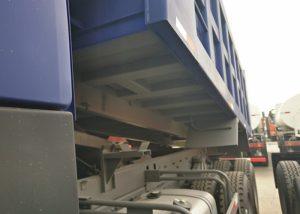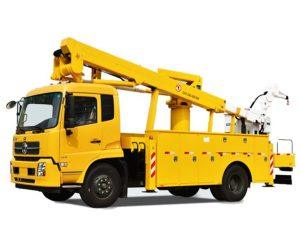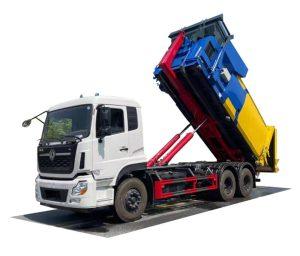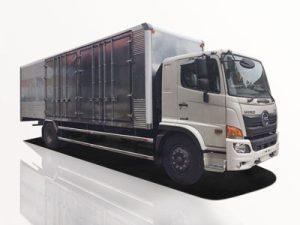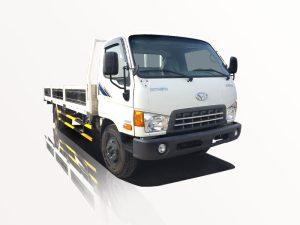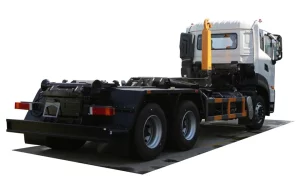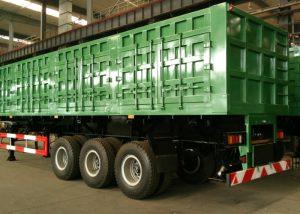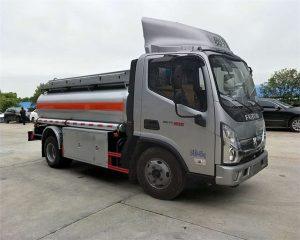Monday to Saturday - 8:00 -17:30
How Tall is a Trash Truck? A Comprehensive Guide
Trash trucks, also known as garbage trucks, play an essential role in maintaining clean and healthy communities. Understanding their dimensions, particularly their height, can greatly assist in various scenarios, including urban planning, vehicle clearance assessment, and waste management strategies. This article will explore the height of trash trucks, factors that influence their size, and everything else you need to know.
Understanding Trash Trucks
Before delving into the specifics of height, it’s important to recognize the different types of trash trucks that exist. Trash trucks can vary in size and design based on their intended use, the volume of waste they handle, and the geographical area they serve.
Types of Trash Trucks
- Rear Loader Trash Trucks
- Front Loader Trash Trucks
- Side Loader Trash Trucks
- Roll-Off Trucks
1. Rear Loader Trash Trucks
Rear loaders have a closed compartment for waste collection and are typically operated by one driver with the help of one or two additional members who assist with loading waste from the curb. Their height generally ranges from 8 to 10 feet.
2. Front Loader Trash Trucks
Designed for industrial and commercial waste, front loaders have large hydraulic arms and a distinct compartment for easy loading. Their typical height falls between 10 to 12 feet.
3. Side Loader Trash Trucks
These trucks can collect trash from both sides. They usually feature automated arms and have a height ranging from 9 to 11 feet. Side loaders are popular in urban areas for their efficiency.
4. Roll-Off Trucks
Roll-off trucks are used for transporting large dumpsters and are commonly seen in construction sites. They can reach a height of around 12 to 14 feet when fully loaded.
Average Height of Trash Trucks
The average height of a trash truck is approximately 10 to 12 feet. However, this can vary based on the type of truck and its specific configuration.
| Type of Truck | Average Height |
|---|---|
| Rear Loader | 8 – 10 feet |
| Front Loader | 10 – 12 feet |
| Side Loader | 9 – 11 feet |
| Roll-Off | 12 – 14 feet |
Factors Influencing the Height of Trash Trucks
Several factors can influence the height of trash trucks. Here are some of the most important ones:
1. Design and Model
Each manufacturer has unique designs and models that can impact truck height. For instance, heavy-duty models designed for arduous work may have added height for larger containers.
2. Equipment and Features
Additional features like cranes, compactors, or lift systems can also alter the total height of the truck. This is particularly true for front loaders.
3. Local Regulations
Certain municipalities have height restrictions in place to minimize road and bridge damage or interaction with overhead utilities. This influences both the design of new trash trucks and their operational dynamics.
Real-World Applications of Truck Height Knowledge
Understanding the height of trash trucks is essential for many reasons. Here are several practical applications:
1. Urban Planning
City planners must account for truck height when designing roads, bridges, and tunnels. Knowing that a common trash truck stands about 10 to 12 feet tall helps ensure adequate clearance everywhere.
2. Waste Management Efficiency
Knowing the dimensions of these trucks allows waste management companies to optimize routes and collection schedules. Planning routes based on street height and accessibility can improve overall efficiency.
3. Residential Guidelines
Homeowners and residents should be aware of trash truck dimensions when designing driveways or parking spaces to ensure accessibility for waste collection.
Comparing Trash Trucks to Other Vehicles
Understanding how trash trucks stack up against other common vehicles can provide better perspective on their size and shape.
| Vehicle Type | Average Height |
|---|---|
| Compact Car | 4.5 – 5.5 feet |
| Standard SUV | 5.5 – 6.5 feet |
| Full-Size Pickup Truck | 6.0 – 6.5 feet |
| Trash Truck | 10 – 12 feet |
Safety Considerations for Truck Height
The height of trash trucks can pose safety challenges. Here are some vital safety considerations:
1. Overhead Wires
Operators must always be aware of overhead wires, particularly in residential areas. Ignoring height restrictions can lead to dangerous accidents.
2. Narrow Streets
Narrow streets in older parts of towns may not accommodate larger trash trucks. Adjustments need to be made to collection routes accordingly.
3. Driver Training
Training trash truck operators on the dimensions and capabilities of their vehicles helps ensure safer driving and maneuvering.
How to Measure the Height of a Trash Truck
Measuring the height of a trash truck is a straightforward process. You may find it necessary for various reasons, from maintenance checks to urban planning.
Steps to Measure
- Park the truck on level ground.
- Use a tape measure or laser measuring tool.
- Start from the ground level to the highest stationary point, typically the top of the cabin or additional equipment.
- Record the measurement accurately.
Frequently Asked Questions (FAQ)
1. What is the average height of a trash truck?
The average height of a trash truck ranges from 10 to 12 feet, depending on the type and model.
2. How does truck height affect waste management?
Truck height affects waste management planning for routes, clearances, and the type of waste that can be collected.
3. What are the safety features considering the height of a garbage truck?
Safety features include mirrors for better clearance visibility, height warning systems, and training for operators to understand vehicle dimensions.
4. Can I measure the height of my municipal garbage truck?
Yes, you can measure the height using a standard measuring tape as outlined in our measurement section.
5. Why are there different types of trash trucks?
Different types of trash trucks exist to cater to various waste collection needs, environments, and efficiency requirements.
6. What should I consider when parking near a trash truck?
When parking near a trash truck, be aware of its height and ensure sufficient clearance from overhead structures and utilities.


